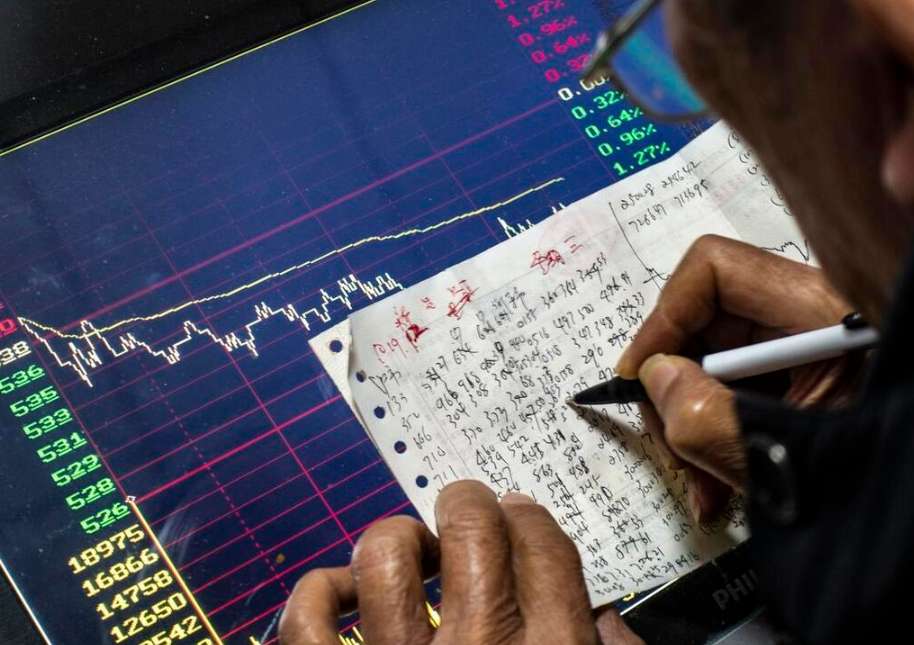Investment & Economy: Gregor Hirt's 2025 Vision
Advertisements
The current discourse surrounding global investments has been significantly influenced by the perspectives of industry experts, particularly those from Allianz Investment, like Gregor Hirt. His assertion that diversified asset allocation strategies can effectively mitigate future uncertainties is a reflection of a more cautious and calculated approach to investment in today's volatile market. The unpredictable nature of economic indicators is prompting investors to seek safety nets by diversifying their portfolios to encompass a range of asset classes.
One of the critical areas of focus is the performance of the U.S. economy, which remains a pivotal player in the global financial landscape. Hirt anticipates that 2025 will commence positively for risk assets, driven largely by substantial corporate earnings growth and a decline in interest rates, underpinned by a resilient U.S. economy. This could potentially create a favorable investment environment, particularly as businesses adapt to the evolving economic conditions.
As the year progresses, Hirt emphasizes the importance of monitoring the American economy's ability to achieve what economists term a "soft landing." This entails not only a gradual easing of inflation but also avoiding a recession, a balancing act that many policymakers hope to execute. However, this scenario comes with its own complexities; a more accelerated growth phase could simultaneously bring higher inflation, creating a dual-edged sword for the economy. On the other hand, there remains the lingering possibility of dire economic conditions such as an abrupt slowdown or recession, which would pose challenges for investors.
Recent events have underscored the importance of being vigilant towards downside risks; for instance, a significant drop in U.S. tech stocks occurred when DeepSeek, a Chinese startup, launched an innovative AI product at the end of January. Such developments emphasize the value of establishing an equally weighted portfolio that avoids excessive concentration in a few large stocks. The volatility inherent in investing calls for a diversified approach to cushion against sudden market shocks.
In constructing a diversified investment portfolio, Hirt expresses a preference for American small-cap stocks due to their alluring valuations and support from fiscal policies. He maintains a bullish sentiment towards the broader technology sector, which continues to be a driver of innovation and growth. Notably, Hirt suggests that within the banking sector, U.S. banks present more extensive growth potential compared to their European counterparts due to prospective regulatory relaxations. This insight is particularly timely, given the ongoing discussions surrounding financial prudence and regulatory balance in both regions.
Moreover, Hirt's recent candid remarks about countries like Mexico, Greenland, Canada, and Panama hint at a robust diplomatic posture that could potentially heighten geopolitical risks. Such assertions are not made lightly, as they carry the weight of influencing investor sentiment and market stability. The interplay of foreign policy, economic forecasts, and market dynamics is complex and often unpredictable.

An important convergence point of these geopolitical and economic policies is the potential for elevated inflation levels in the future. While this may not necessarily spell doom for risk assets, it could create challenges if inflation spirals out of control, meriting close attention from investors and central banks alike.
A significant factor will be how the Federal Reserve steers its monetary policy in response to economic overheating. The bond market has already begun pricing in some likelihood of accelerated economic growth alongside expectations that the Fed may lower the frequency of interest rate cuts. In recent months, we witnessed a notable rise in U.S. bond yields, which has subsequently reduced the risks of further market corrections.
In summary, while expectations for returns may not shine as brightly in the upcoming years compared to the past 12 to 18 months, Gregor Hirt expresses a continued confidence for 2025. He advocates for a flexible strategy to adjust investment portfolios in response to evolving geopolitical and economic landscapes.
To navigate the uncertainties that 2025 may present, Hirt offers investors two guiding principles: consider broader diversifications in their allocations and maintain steadfastness in their investment commitments while navigating the inevitable market fluctuations.
Categories
Latest Post
- Behind the Record-breaking Gold Prices
- OPEC Extends Production Cuts
- Predictions for Federal Reserve Rate Cuts
- DeepSeek Takes the Securities Industry by Storm
- Fed Holds Rates Amid AI Regulation, Controversy
- Federal Reserve Cuts Interest Rates Again
- US-UK Businesses Adapt to Exchange Rate Volatility
- Breaking News: AI Revolution!
- A-shares Take a Sudden Turn!
- Big News from Alibaba